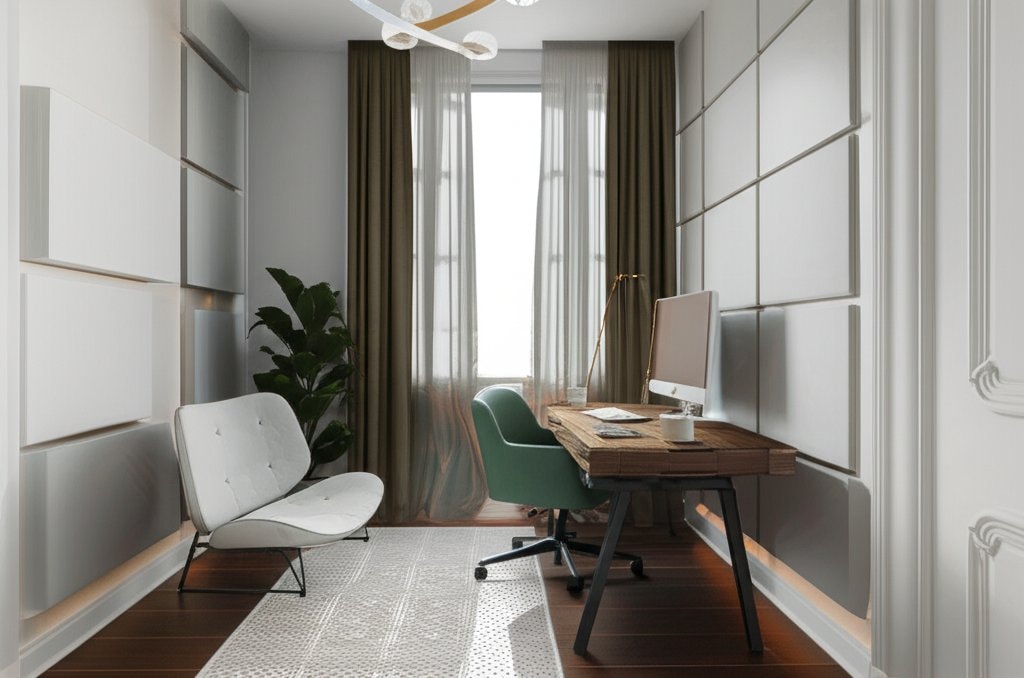How Much Does Home Office Soundproofing Cost in 2025?
Creating a quiet home office is a priority for many remote workers and entrepreneurs. Whether you are dealing with noisy neighbors, household distractions, or street sounds, soundproofing can transform your workspace. This guide breaks down the costs, ranging from budget-friendly fixes to premium installations, to help you plan effectively. All estimates reflect 2025 market trends and standard United States regional pricing.
Quick Cost Overview
- Basic upgrades: $50 to $1,000 for small, do-it-yourself solutions.
- Midrange retrofits: $1,000 to $4,000 for targeted wall or ceiling improvements.
- Full room builds or pods: $3,000 to $15,000 for comprehensive, professional setups.
- Key cost drivers: Materials like mass-loaded vinyl, labor for framing, and the complexity of structural changes.
Key Factors Influencing Soundproofing Costs
Several elements determine where your project falls within the cost spectrum. Room size, desired noise reduction levels, and material choices play significant roles. For instance, opting for sustainable acoustic insulation can increase material expenses by 10 to 30 percent compared to standard options. Labor, which often accounts for 40 to 70 percent of the total, spikes further if heating, ventilation, and air conditioning systems need relocation.
Cost Breakdown by Project Scope
- Small Improvements ($50 to $1,000): Ideal for minor noise issues, this includes door sweeps, acoustic caulk, heavy curtains, and a white noise machine. These solutions reduce mid and high-frequency sounds, enhancing clarity during virtual meetings. Most of these tasks are manageable without professional help.
- Shared Wall or Ceiling Upgrades ($1,000 to $4,000): This level targets specific noise entry points with dense insulation, additional drywall layers, and damping compounds. Professional sealing of gaps ensures sound does not travel through overlooked paths.
- Full Room or Prefab Pod ($3,000 to $15,000): For maximum noise control, this involves staggered stud walls, insulated ceilings, floating floors, and mass-loaded vinyl. Such projects often require skilled contractors to achieve high Sound Transmission Class (STC) ratings.
Labor and Professional Services
Hiring a carpenter or acoustic specialist typically costs between $65 and $120 per hour, varying by region and expertise. Complex tasks like structural decoupling or ductwork modifications demand professional skills to avoid safety risks. For simpler upgrades, such as installing curtains or lightweight panels, a do-it-yourself approach can save significant labor expenses. Always consult a licensed contractor if permits or fire code adjustments are involved.
Additional Cost Considerations
Beyond materials and labor, other factors can influence your budget. Aiming for a higher STC rating, such as an increase of 5 points, often requires advanced techniques like decoupling, which raises expenses. Irregular room shapes or multiple wall penetrations demand extra time and resources. Additionally, choosing eco-friendly insulation or designer acoustic panels will elevate costs compared to standard fiberglass or fabric options.
Strategies to Reduce Expenses
Soundproofing does not have to break the bank if you plan strategically. Begin with an acoustic audit using a decibel meter app to identify weak spots like windows or vents, then focus on sealing gaps and installing a solid core door for immediate impact. Modular panels or portable solutions work well for renters or those needing quick fixes. Combining thermal and acoustic upgrades, such as insulated windows, can also split costs while boosting energy efficiency.
Return on Investment
A quieter workspace often translates to better focus and fewer interrupted meetings, yielding measurable productivity gains. For homeowners, a well-designed home office may enhance property appeal, though direct financial returns depend on local real estate trends. Energy-efficient upgrades, like improved insulation, can further offset initial costs over time through reduced utility bills.
Frequently Asked Questions
- What is the cost of a solid core door? A quality solid core door ranges from $150 to $600, with installation adding another $150 to $400.
- Do acoustic curtains block road noise? They reduce high and mid-frequency sounds but struggle with low-frequency traffic rumble.
- Is mass-loaded vinyl a good investment? Yes, it effectively adds mass and reduces airborne sound when paired with damping and sealing techniques.
- How much noise reduction comes from double drywall with damping? This setup can boost STC ratings by 8 to 12 points if installed correctly.
Plan Your Soundproofing Project
Start by measuring your current noise levels with a free decibel app and pinpoint problem areas like thin walls or unsealed vents. Address low-cost, high-impact fixes first, such as caulking gaps or adding weatherstripping to doors. Track the results after each step to determine if larger investments, like full wall assemblies, are necessary. This phased approach keeps expenses manageable while delivering a noticeably quieter workspace in a matter of weeks.







